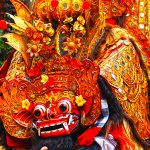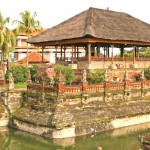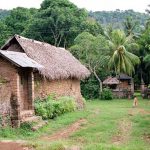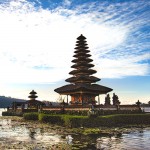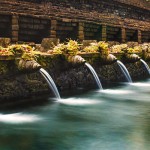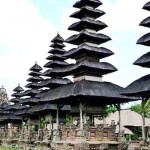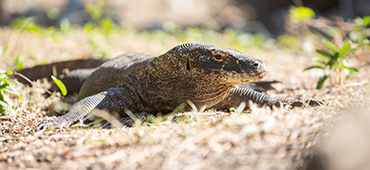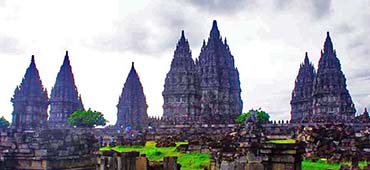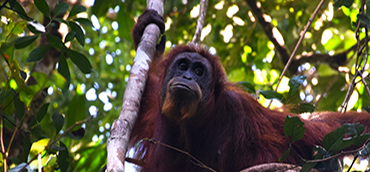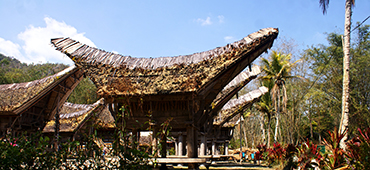This is a very popular tourist object in east Bali and, as the bats are protected by law, the cave is over run with them. A distinct aroma of bat guano exudes from the cave and the roofs of the temple shrines in front of the cave are liberally coated with bat droppings. Superficially, the temple is small and unimpressive, but it is very old and of great significance to the Balinese as it was founded in 1007 by Empu Kuturan. Goa Lawah Temple is one of the island’s nine special Sad Kahyangan Temples and it is designated such as holy place to honor the God Maheswara, who resides in this section of the island. Religious processions in the temple is every day, and it is a particular focus for religious rites associated with death.
In front of the cave there are small shrines of a Shivaite temple guarding the cave’s entrance. This Place has been worshipped since around 1000 AD, and was founded by an itinerant holy man, named Resi Markandya (a holy priest from Java).
The cave is also said to lead all the way to Pura Goa in Besakih, some 30 km away, but nobody in recent times has volunteered to confirm this since the bats provide sustenance for the legendary giant snake, Naga Basuki, which is also believed to live in the cave. This ancient reptile is believed to be the caretaker of the earth’s equilibrium, a belief which stems from pre-Hindu animism.
In the 17th century the temple was used as a place of worship by the King of Klungkung and the Bat Cave was also used to test the innocence of people found guilty of breaking the law. When within the kingdom of Mengwi, a dispute ensued between two of the king’s descendants, I Gusti Ngurah Made Agung and I Gusti Ketut Agung. The latter was not accepted as the descendant of the King of Mengwi, so he agreed to enter the Bat Cave and if he came out alive he would be recognized as a descendant. The cave at that time also housed, as well as bats, big snakes and other wild animals. According to legend I Gusti Ketut Agung accepted the sentence, entered the cave and finally found at Besakih.
To Respect to the judgement of the King of Klungkung, he was recognised as a member of the King of Mengwi’s family. When he became a King he was known as I Gusti Ketut Agung Besakih. The records also said that as a result of entering the cave he became deaf. The snakes and other wild animals no longer inhabit the cave, but thousands of bats that remain create a unique and popular interesting.
from thousands of temples in Bali, some of them are Kahyangan Temple and One of them is Goa Lawah Temple. This temple stands at the junction between the beach and the hills with a cave inhabited by thousands of bats. Lontar Padma Bhuwana mention Pura Goa Lawah is one of the celestial universe / heaven as the Palace of God Maheswara and Sanghyang Basukih , to function as a center-mount Nyegara.
Pura Goa Lawah is an area that is sacred and beautiful. There’s a mix between sea and mountains (linga-yoni). As the name suggests, in this temple there is a cave inhabited by thousands of bats. The thundering sound of the bat boisterous relentless, morning, noon let alone at night. Blink of tens, hundreds or even thousands of head fly. Soon come, hanging, hanging, overcrowded on the walls of the cave coral. Sounded like a chant so boisterous eternal nature of all time. Not to mention the appearance of snake duwe, lelawah (bats) white, yellow and brumbun, adds more mystique atmosphere in the temple in the village Pesinggahan, Dawan, Klungkung. While at the mouth of the cave there are several palinggih as the Place of the Gods. In the court, also stood firm some Meru.
Who built the temple Goa Lawah and when built?
Difficult to uncover and open plainly the mystery. In addition to the age of the building for worship was already old, and they also rarely speakers who really know the ins and outs of its existence.
Indeed, there are some palm briefly write Pura Goa Lawah existence. However, very rarely dare to open clearly and conspicuously, who and when one Temple was built.
If traced from Goa Lawah word, literally little or absence can be explained that the cave means cave (hole) and Lawah means bat. So it could be interpreted Goa Lawah bat cave. In some papyrus, a glance there were concluded in outline that pretended great status universe and Kahyangan Temple in Bali was built by the famous Priester, MPU Kuturan.
MPU Kuturan also teaches the manufacture of Kahyangan tiga in every Pakraman in Bali and confirmed the existence of Kahyangan Temple that one of them is Goa Lawah. As written in the papyrus of Usana god, MPU Kuturan also listed as the designer of the building shrines in temples such as ancestral shrines and Meru and Balinese architecture. As well as various types of ceremonies-upakara and pedagingan shrine. It was contained in the papyrus Dewa Tatwa. MPU Kuturan have laid the groundwork very principles as rules of social life, inherited order to date in the form Pakraman.

